#Transformers (1986) Japanese dub
Text
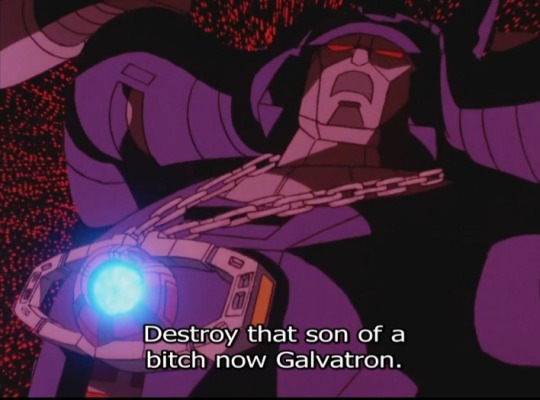
WHAT
EXFUCKINGSCUE MEEE
AND TO THINK IN THE ORIGINAL KIDS ALL WENT "OOOOOOOOOH" WHEN SPIKE SAID "OH, SHIT!"
#Unicron is here with ZERO chill#None!!#Maccadam#Transformers#Transformers The Movie#Unicron#Galvatron#Transformers (1986)#Transformers (1986) Japanese dub#Loon.txt
136 notes
·
View notes
Text
Transformers: Lost Media Post!
So, as with any long-running franchise, there are a few bits of Transformers media lost or presumed lost (might exist but has not been publicly released, is in private ownership, was never included in a final cut or broadcast copy, etc).
The Lost Media Wiki has organised some of this lost media into helpful pages, which I will link and summarise here for anyone interested! :)
The Transformers: The Movie (1986) - Missing Scenes
The movie itself obviously isn't lost, but there are scenes from the film that appeared to be fully animated but not included in the final release of the film that have never been located.
At least one scene was fully storyboarded, suggesting it made it far enough into production to possibly have been animated which may have then gone missing as it was never made available as part of any final cut or subsequent release.
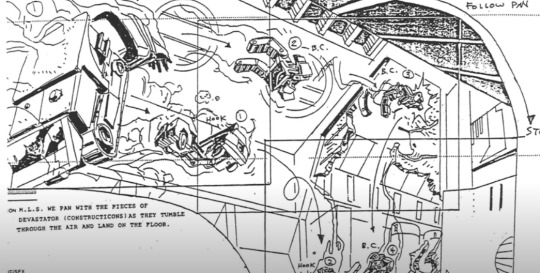
[The screenshot above is taken from the YouTube video of the scene, available on the Lost Media Wiki page; The link in the paragraph above goes to the collection of Sunbow Animation storyboard archives, which includes other missing script-only or storyboarded-only sequences from the film during various stages of development.]
Some scenes/shots shown in trailers for the film were at least animated in part but never included in the final version of the film.
G1 Transformers Missing Japanese Clip Show Episodes: 戦え! 超ロボット生命体 トランスフォーマー
11 unique clip show episodes in total were made for the Japanese release of G1, none of which have ever been found.
The content of the clip shows is unknown, only that they re-used animation and possibly scenes left intact from prior/other episodes (it is unclear how exactly they may have been edited or re-dubbed to make a unique clip show episode), and they have never been included on any Japanese regional DVD, VHS, or other official collections of Transformers Japanese language media.
Transformers Victory: Japanese Language Clip Show Episodes
Although the English dub versions of Transformers Victory by Omni Productions have been made available by Shout! Factory, as with the prior G1 missing clip shows, there are 6 unique Japanese broadcast only clip show episodes of this series which have been lost.
There are an additional 6 Japanese only home video/VHS episodes, five of which have been found on the Pioneer DVD releases, but one of which remains missing.
Found Missing Media: Transformers RID - Spychangers to the Rescue
This one is an example of the types of edits made to many animated shows following 9/11, in which many shows featuring anything involving explosions, city settings, planes, the Twin Towers themselves (or references to any of these things or anything similar) were heavily edited to remove any such content, with the originals never getting re-broadcast or re-released.
(Shows that could not be edited, for example shows that entirely took place in New York where backgrounds would constantly show the Twin Towers etc., were never re-aired in most cases, or only re-aired many years later/released on a direct to DVD basis.)
The reason this episode was re-dubbed is because the original plot involved a generator which would explode if impacted and release gas across the city, which may have resembled or otherwise brought to mind the large dust clouds caused by the collapse of the Twin Towers a little too closely for the broadcasters to feel comfortable leaving the original dialogue about gas and explosions intact.
It was changed in an attempt to lessen the emphasis on explosion and potential harm to the city.
The threat of explosion featured as a major concern in the episode also may have resembled the initial belief that perhaps a bomb had gone off in the Twin Towers, before most people realised it was actually a collision from a plane that caused the first visible damage to the first tower-- It took a moment for people to figure out what was actually happening on 9/11. Initial reports assumed it had been a bomb.
Much of the episode also involves the cast getting caught in traffic in and around the city, which may have resembled or evoked thoughts of the notorious difficulties in evacuating/clearing out roads during the immediate aftermath of 9/11 when everyone was, to put it lightly, fucking panicking.
I remember this all very clearly, but I'm explaining this stuff for those of you who may not have clear memories of the day or for those of you who may be from outside the USA and never saw the initial American news broadcasts which were covering all of this live.
Without this context, the edits made to this episode and why this episode was scrutinised so heavily following 9/11 may not make sense! But I hope it makes a little more sense now.
Any of these "pre-9/11 edit" episodes of pretty much any animated series are hard to find, as almost none of the original episodes are available except on personally owned taped versions, many of which are sadly poor quality owing to VHS recorder tech not being super amazing in general.
Thankfully, AnonyTF over on YouTube had a VHS recording of this episode featuring the originally broadcast English dubbed version, so everyone can enjoy it in it's originally intended state!


The Transformers (2007) - Lost IMAX Edition
The IMAX release of the film had some known alterations, edits, and alternate/new scenes added to it.
However, since Michael Bay has said he will never release these IMAX exclusive scenes or release the IMAX cut on any home media, it is safe to say that they do exist in some form, but will not be made publicly available.
Yet another reason to dislike Michael Bay, but I digress.
Conclusion: Lost Media Can Be Found!
Just because these bits and pieces are missing at the moment, doesn't mean we'll never see them, if they do still exist (or in some cases, if they ever did in the first place).
I get the feeling that with the Japanese language missing media, this might partially be a language barrier issue; It'll be harder for any English speaking only fans to find Japanese language only media, same as with trying to find any foreign language media when you don't necessarily speak that language and therefore might also be missing certain regional resources or other context that would help find it otherwise.
(Not to say there aren't Japanese fans also looking for these episodes-- There almost certainly are! But English speaking only nerds might find themselves struggling to aid in the search.)
Plus, other mecha shows were (and generally have been) more popular than Transformers in terms of Japanese broadcast TV ratings. To be fair, Japan has a very broad selection of mecha shows, all of which are pretty good! And it's not like Transformers isn't popular in Japan, it just isn't as popular as quite a few other mecha genre staples which tend to top the charts in that region.
At the time of airing, G1 Transformers had some hot competition in Japan-- It's very possible that if someone only had a couple blank tapes on hand, they may have simply chosen to record something else that they were a little more interested in. (Remember that it wasn't as easy or as cheap to record stuff back then-- Choices had to be made!)
(TakaraTomy, Hasbro's Japanese partner, seems to be very aware of the persistently strong regional competition; Remember the Transformers x Evangelion crossover they made? It's fucking great. And they knew it would have broader appeal as a crossover to Takara's local Japanese audience/figure collectors than just releasing a plain ol' repaint of Optimus Prime. There aren't many mecha shows/franchises in the west, but there sure as hell are in the Japanese media market, so competition remains pretty tough in that region.)
There may not have been as much interest/incentive for Japanese audiences to record these G1/Victory clip shows at the time of original broadcast for various reasons, or if someone did record it, they may not even realise they're sitting on a valuable piece of lost media!
It's also entirely possible that it's all floating around somewhere, and nobody's realised it yet. The original broadcasting networks might have copies in storage that nobody's had to mess with in years. And so on.
There's all kinds of reasons for media, even popular media or niche appeal media with a strong fanbase, to go missing.
But you never know; Stuff can pop up in personal collections, local media archives, library video storage, defunct websites, in broadcast network/studio storage, and all sorts of places!
So I do hope that one day, we do get to see some of the missing Japanese G1/Victory episodes. :)
And it would be cool to get a hold of any of the original movie scenes as well, if any of them were ever fully animated (or saved anywhere, if they were)!
As for the IMAX edition situation, well, that's just Bay being an asshole. At least we know that version of the film does still exist though, even if it's not available publicly! So hey, maybe one day he'll give up and let it be released in some form. Who knows. lol
---
Anyway, this got way longer than I thought it would be-- Mostly because I had to contextualise 9/11 media edits to explain the whole RID episode situation, but hopefully all of that context is helpful and makes the re-dubbing of that episode make a little more sense.
If you read through all of this, thank you as always!!! :) <3
If there are any Japanese TF fans out there reading this, I'd love to hear from you, if you might have any thoughts on the Japanese missing media! :)
I have very little experience with any Japanese Transformers material out there (primarily due to language barrier and lack of access to Japanese releases, in my case), so it would be lovely to speak with fans who have a much better idea of Transformers Japanese media in general.
#lost media#RID 2001#RID#transformers#long post#transformers g1#g1#maccadam#maccadams#robots in disguise#transformers victory#transformers lost media#transformers the movie#transformers 1986#bayverse
43 notes
·
View notes
Note
I LOVE DVDS.
I have all the live action Transformers dvds + the 1986 movie (is waiting for ROTB to come out I think... next month??)
As convenient streaming services are, I will never forgive them for what they did to the DVD and movie rental industry. It makes me sad hearing that houses not having DVD players is a normal thing. FUCK YOU NETFLIX I'm going to keep buying DVDs with funky menus and exclusive bonus features and there's nothing you can do to stop me !!!
Anyways, rant over. Any DVDs you have that are special to you?
DVDs are forever!!! They have subtitles! Scene selection! Special features!!! Audio commentary!!! I hate Netflix and Disney+ with what they've done to society and media preservation. However, I do use my parents Netflix while they still have it (I told them to pirate instead but Dad is so worried about viruses and shit.)
I don't think you understand what you've unleashed anon, do you want to see my DVDs?
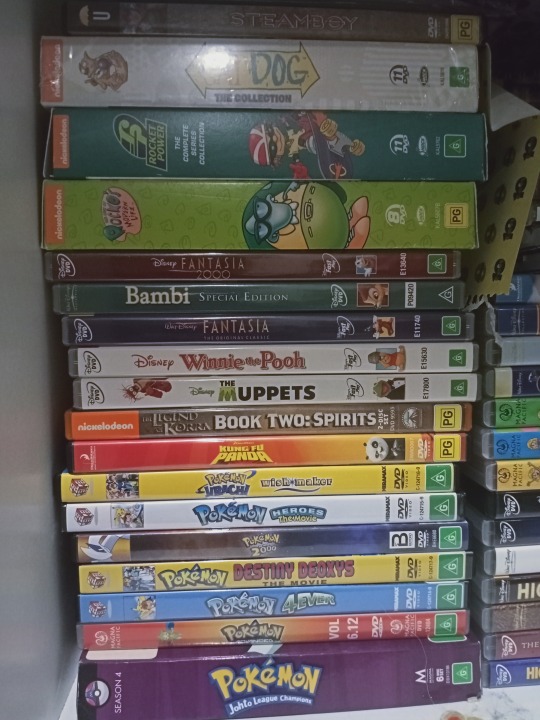




Too bad. Here you go. (Some aren't in the right spots and the rest of Legend of Korra is in a different room). No I'm not gonna show you ever DVD but try and spot something you might recognise.

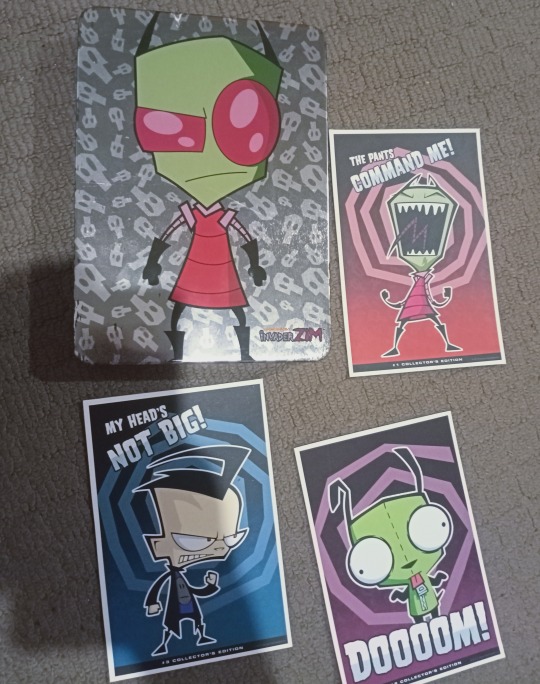
My Sonics and Zim collection are very important to me. Sonic X dub DVDs I got as a kid but I also have the Discotek Complete Series Japanese version!

I love my cartoons!! These aren't even all of them! I have Samurai Jack 1-4 somewhere. (Season 5 still pisses me off.) Next time I might go to JB HiFi and get more Nick or CN stuff, whichever is there.
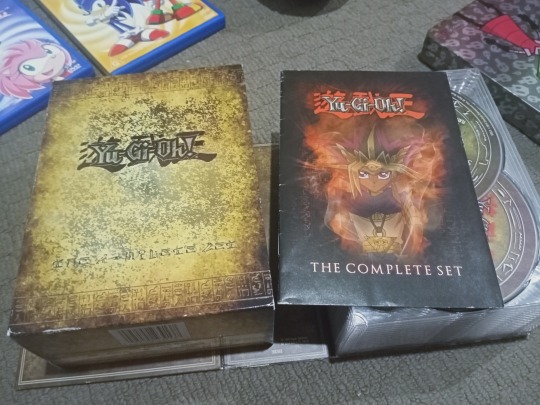
There's also this Yu-Gi-Oh DM boxset a friend in America bought me! Sure, it's dub only, BUT it comes with Bonds Beyond Time Eng and Jpn!!


Something I value a lot though is my Space Ghost Coast to Coast collection and my Brak Show collection!!! Not sure where I'd be without my stupid space friends.
Look, there's a lot of DVDs I find special to me. My Princess Diaries dvd set. My SpongeBob movie dvd. All my SpongeBob DVDs actually. The Rescuers collection. Swan Princess collection. School of Rock. Darkstalkers OVA.
But something I always come back to is....this.

Peak media.
Also hey speaking of Transfomers-

Got this for my birthday this year from my parents.
Sorry that was such a big answer anon, I'm just so passionate about physical media. Thank you for sending a message! Means a lot to me.
#kit.txt#Anon#Thanks for asking!#I need to boot up my vhs and watch some of my video tapes too. We have plenty of tv recorded tapes and I need to find this one Nickelodeon-#-short movie I can't find online ANYWHERE#ALSO I taped marathons of Rugrats on video tape#AND I FOUND MY GOBOTS VIDEO TAPE FJDNNDNDNDNDNDN turns out they had a different name in Australia#Now I gotta clean this up
6 notes
·
View notes
Text
Announcements and Updates
Here are some updates and announcements things that will happen in the future.

Lowder Reviews
I have decided to delay the rest of the first batch of Lowder Reviews that are after the hiatus.

But in place of it will be a review for the entirety of all of the G1 Transformers shows and movies, both American and Japanese. The list includes The Transformers (1984-1987), Transformers: The Movie (1986), Transformers: Scramble City (1986), Transformers: The Headmasters, Transformers: Super-God Masterforce, Transformers: Victory, Transformers: Zone, Beast Wars: Transformers (1996-1999) and its Japanese dub, Beast Wars II: Super Life-Form Transformers (1998-1999), Super Life-Form Transformers: Beast Wars Neo (1999), Beast Machines: Transformers (1999-2000), Transformers: Car Robots (2000) and its English Adaptation, Transformers: Robots in Disguise (2001-2002).

Lowder in general
It's kinda lonely here, so, I decided to make a bunch clones of myself with different colors, abilities, genders, and sizes. Here is a picture of all of them.
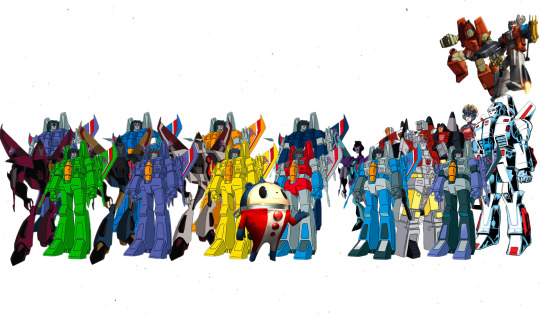
Even though they look like the Seekers and Aerialbots from Transformers in the picture. This is what they should like outside of the picture:
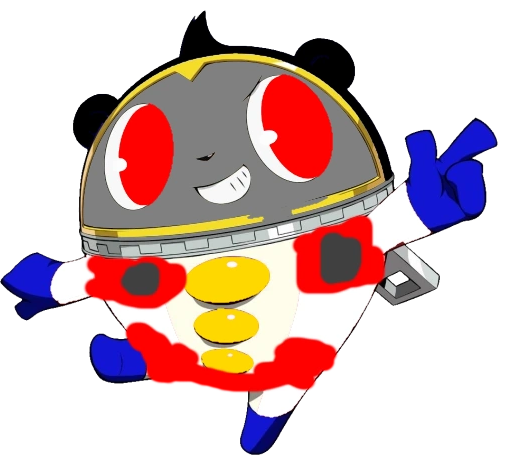
(An example of what one of them look like)
Hera their names and where they come from:
Lowderscream=Starscream
Thunderlowder=Thundercracker
Lowder=Skywarp
Dirge=Dirge
Ramlowder=Ramjet
Thrust=Thrust
Acid Lowder=Acid Storm
Ion Lowder=Ion Storm
Nova Lowder=Nova Storm
Sliplowder=Slipstream
Windlowder=Windblade
Sunlowder=Sunstorm
Bitlowder=Bitstream
Lowdercelle=Nacelle
Lowderlink=Hotlink
Skylowder/Jetlowder/Lowderfire=Jetfire/Skyfire
Lowderbolt=Silverbolt
Air Lowder/Lowder Raid=Air Raid
Firelowder=Firefight
Lowderdive=Skydive
Lowdershot=Slingshot
Lowderglide=Powerglide
Lowder Bravo=Alpha Bravo
Together all of us form the Lowdebots. So, say hi all of you.

All of them: Hello.
So now that you know what new things are happening, so goodbye.
#lowder reviews#transformers#the transformers#transformers headmasters#super god masterforce#beast wars#beast machines#robots in disguise 2001#update#announcment#show review
2 notes
·
View notes
Note
So I watched Earthspark and I liked it, but the one thing that worries me about getting into earlier TF is that I'm worried nothing is going to meet my wants Fully, if that makes sense.
Animated and Beast Wars are the big two that I plan to watch, but in the former, from what I've read it's a lot of human villains when I like Decepticon politics, and while i hear that comes in it's only Later. Meanwhile, with Beast Wars, I'm told it's very good, but I'm going to miss human/Transformer relations (THE MALTOS ARE GREAT).
And from what I've researched and you've said, I'm not doing the aligned universe, G1 will probably be fine but i'd need to prime (heh) myself for stupid schemes of the week and animation errors. What else is there, in terms of shows?
The editor is piping in here to say that is EXACTLY why they didn’t watch earthspark first, they do not envy you. They also recommend tf victory (if you can watch subbed anime)
On animated dont worry, there are human villains running around but they’re not bad at all, and when the decepticons show up they’re so good. For beast wars I know it seems like you’d need humans but there’s actually so many transformers (without being overloaded) that have interpersonal relationships that work so well it’s so much fun and the best written show overall.
I will recommend both Armada and cyberton, they’re both really good on the human transformer relations, which you would think make me rec the unicron trilogy as a whole but I’m telling you energon is so bad and nonsensical you will fall asleep (I watched it while playing palia on my switch to be fair, but ask anyone they all hate energon). It’s not a REAL trilogy to be fair you can watch all of them on their own they don’t actually have plot points in common, it’s the English dub which tries to connect them. I’d say if you can watch subbed anime (unlike me) you’d have a better time watching the Japanese EXCEPT!!! Gary Chalk and David Kaye as Optimus and Megatron are unmatched they as so fucking good that you do need to watch the dub, this is the ultimate megop I’m sorry to Peter and Frank but Gary and David are the best at making this relationship work.
As for aligned Prime is unwatchable if you like modern cartoons like me (as in like earthspark, that post Steven universe era emotionally intelligent stuff yk) however robots in disguise isn’t bad so I would recommend it. The overarching plot isn’t good but the regular character hijinks are great. And the humans in this show are a kid and his divorced quirky dad and they’re genuinely really sweet and work so well like they are TOP tier humans of everything I’ve watched so far. RID makes up for Primes shortcomings on everything except the mess of the politics of the overarching aligned continuity, but I’m telling you it doesn’t matter as a whole.
And g1, yeah you have to get in the mood for the 80s cartoons, and you will need to make a note pad to try and remember who all the guys are (I mean that. They do not go 5 at a time they throw everyone at you immediately, you’ll need it for things like trying to spot the difference between prowl and blue streak who has no blue). It’s like 87 tmnt, it’s a classic, but it has some eh and even iffy stuff sometimes (the country of ‘carbombia’ for one) . But the voice acting is top notch and it will hit you with stuff that will have you shocked by it’s soft sincerity sometimes, the characters are so beloved and you NEED TO START HERE. This is the basis of the franchise these are your cliff notes. It will help so much to start here. And then don’t skip the transformers the movie (1986) after s2 of course, I cannot recommend that highly enough.
#the tf binge watch#as far as everything I’ve seen that’s what I can all highly reccomend at least#I’m going over the fucking chart we just made LMAO
0 notes
Text
Gorgeous Irene
We're getting into the 1980s here at Mahou no Manga, which is perhaps one of the most important decades in the history of the magical girl genre. So before I start talking about the manga du jour, I first want to unpack what made the 80s so, dare I say, transformative.
The 1980s were a time of great change for the magical girl genre, and these changes were being felt across a variety of media. Starting with anime, Mahou Shoujo Lalabel finished airing in 1981. The anime was produced by Toei Animation, an animation and planning company that had also created nearly every other magical girl anime in existence at that time (the sole exception being 1971's Fushigi na Melmo, animated instead by Tezuka productions). Once Lalabel ended, Toei took an approximately decade long break from releasing new magical girl anime. 1982's Magical Princess Minky Momo (handled by Ashi Productions) would be only the second ever non-Toei magical girl anime. Following its' success, numerous other studios, mangaka, and other content creators of the time would put their own spin on the magical girl formula, which dramatically expanded the scope of what a magical girl can be and do. As such, this is the point where we start to see the consensus as to which titles are considered magical girl and which are not break down. Is Spoon Oba-san a magical girl anime? What about Vampire Princess Miyu? Who knows?
Key innovations of this time include the creation and popularization of the magical idol sub-genre thanks to 1983's Magical Angel Creamy Mami, Studio Pierrot crossing over their magical girls in 1987 (or 1986 depending on how you look at it) to create what is likely the first ever magical girl team in anime, and a small handful of male-oriented magical girl OVAs being released to the newly booming direct-to-video market. That last point is particularly interesting to me because prior to the eighties, magical girls designed for boys and men were a rarity. 1973's Cutie Honey was the first magical girl series intended for a male demographic in both anime and manga, but despite its' success, it was essentially a one-off. While male-aimed magical girls still weren't super common in the eighties, they were slowly growing in number. Similarly, two of these OVAs (Dream Hunter Rem and Genmu Senki Leda, both released in 1985) are early examples of magical girl warrior anime. While neither would be hugely influential on their own, they are a stepping stone on the path to magical warriors being the most common kind of magical girl.
As well, the late eighties saw both magical girl anime from the 60s get rebooted. Himitsu no Akko-chan was brought back as a live action TV special in 1987, and a TV anime series retelling the story of the original in 1988. Sally the Witch would get a direct sequel series in the form of a TV anime in 1989. These weren't the first magical girl reboots (There was a new Comet-san TV drama in the 70s that I think is technically the first), but they are emblematic of the nostalgia cycle starting to apply to magical girl anime, something we are still seeing to this day with works like Sailor Moon Eternal and Tokyo Mew Mew New.
The eighties are also when magical girls would globalize at an unprecedented rate. Existing Japanese magical girl shows were exported to numerous foreign markets during this time, mostly in Europe and South America, with foreign language dubs being created for these properties, including some of the first English dubbed magical girl anime. The first magical girl anime to receive an English dub was 1979's Hana no Ko Lunlun, a few episodes of which were edited together into a TV movie that aired in 1981 under the unhelpfully generic title of Angel.
Meanwhile, original English language magical girl cartoons were being created in greater numbers than before. American cartoons of the 80s are known for toy tie-in cartoons, and so doll lines like Jem, Rainbow Brite, and the original She-ra were adapted to screen. Notably, these 80s magical girl cartoons generally did not derive influence from existing magical girl anime. Rather they developed on their own, often repurposing existing fantasy and fairy tale tropes to be more female centric and magic intensive.
And then there's manga. During the 1980s, magical girl manga would undergo two major changes, both of which essentially comport with changes in contemporaneous magical girl anime. First of all, this decade saw an uptick in shounen and seinen magical girl manga. Like I said, Cutie Honey was the first shounen magical girl manga, but because it has a very high-profile anime (or, y'know, five, who's counting?), it was not covered on the blog. As such, every manga we've looked at prior to now has been shoujo. But starting today, Mahou no Manga will be covering manga geared towards boys and men as well.
Secondly, this is the point at which we start seeing magical girl manga making its' way into English speaking fan communities. A handful of 80s magical girl manga have been translated by manga scanlating groups and at least one got an official English release in its' own time.
Both of these changes come together in the topic of today's post: the first shounen manga to get its' own write-up on this blog, and the first manga I've covered that has been translated in its' entirety.

Gorgeous Irene is a manga by Hirohiko Araki about a gorgeous assassin named Irene Rapona. Usually taking on the appearance of a strange and airheaded sixteen year old girl, Irene has an arsenal of magical makeup that can transform her into a sadistic woman with hypnotic abilities and an invincible body. Those who contract her must become her friends, and in exchange for their friendship, she will protect them from harm. She does battle with powerful enemies, using her makeup as a deadly weapon. Not only that, but she is a master of disguise who can blend in anywhere, or stand out as she sees fit.
As a magical girl story, this one is... certainly interesting. Given that it is quite short, we don't get much of a read on Irene's character, and most of her life story and motivations remain cloaked in mystery. Where she got her makeup and what the full extent of its' abilities are are never made fully clear. As well, her story is often told from the perspective of her clients until the moment she leaps into battle. The character drawing style is... distinctive let's say. Proportions and poses are what I can only describe as stylishly awkward. As for Irene herself, I actually like her quite a bit. She has a tenacity and charm to her that really carry the story in my opinion.
I will say that if you want to read this one for yourself, definitely know your own limits. Content warning for animal cruelty, graphic bloody violence, and body horror. The female characters, including Irene herself, are very much sexualized, so if you're not comfortable with that, this might be one to skip. As well, if you're squeamish about bugs, the final chapter is probably going to get to you.
Gorgeous Irene's publication history is a bit of a mess. Many online resources will tell you it was published from December 23, 1980 to December 20, 1986 (which is how this ended up being the first eighties manga on my timeline) and it ran for five chapters. These five chapters were published in a single tankobon volume on February 10, 1987, and every subsequent reprint has included all five chapters. However, Gorgeous Irene isn't the only thing here. In actuality, it only makes up the last two chapters, with the other three being assorted one-shots by Hirohiko Araki.
These additional stories are interesting in the own right, Especially Mahounen B.T. and Busou Poker. The former would go on to have a six chapter run of its' own, and a sequel one-shot published in 2021. As of this writing, I've only read the original one-shot. Although I have seen the title translated as Magical Boy B.T., it is not a magical boy manga and is instead a detective story in which the main character occasionally does sleight-of-hand magic tricks. Not to mention a more accurate translation would be Wicked Boy B.T. and the official English title is Cool Shock B.T.. Busou Poker (Poker Under Arms) is a wild west poker drama of sorts, which is not my cup of tea but does still boast some historical significance as Araki's debut work, published on, you guessed it, December 23, 1980.
Hirohiko Araki is best known as the creator Jojo's Bizarre Adventure. It would certainly be interesting to compare and contrast that manga with Gorgeous Irene, but alas I have not actually read or watched Jojo's Bizarre Adventure. I was tempted to try some for this project, but given the sheer amount of Jojo content that has been created, I didn't think I would be able to get a sufficient understanding of the series in a timely fashion. So if there are any JJBA stans among my readers, feel free to check out Gorgeous Irene and drop your observations in the reblogs.
Gorgeous Irene ran for two chapters in Weekly Shounen Jump, the first chapter published October 1, 1985, the second published December 20, 1986. Both chapters were published alongside the other short stories on February 10, 1987 with reprints on March 19, 2004, in October of 2007, and on December 16, 2012. Most recently, the manga received a digital rerelease on November 1, 2015. As far as I know, Gorgeous Irene has never been officially published in English. The good news is, Project Bite Me! Scanlations has released an English translation of all five chapters, making this arguably the most accessible manga I've covered on this blog, and its' tangential connection to Jojo's Bizarre Adventure makes it easily the most well-known manga I've covered. For once it wasn't a matter of trying to scrounge up enough information for a coherent write-up, but deciding what information was important enough to include vs. what to omit. Huge shout-out to Jojo's Bizarre Encyclopedia for having most of this information at-the-ready. If you want to know more about Gorgeous Irene, go check out their article on the subject.
While I certainly have my criticisms of this manga, it was an engaging read to say the least. I've never seen another magical girl story quite like it, and I think it makes for the perfect segue into a new era of manga in the genre.
#my posts#long post#Gorgeous Irene#ゴージャス★アイリン#Hirohiko Araki#荒木 飛呂彦#Shounen Jump#80s#shounen#In hindsight I probably should have been tagging the rest of my stuff as shoujo for posterity's sake.#I wonder if I should go back and tag everything retroactively.
47 notes
·
View notes
Text
What I Want To See More On Tumblr
Tumblr is a sharing/social networking blog site that has a variety of content. However, there is content that also needs more recognition, and I see little to none of that content; probably because it is underrated and not very many users talk about or mention it. Of course, there will be plenty of opportunities to add more content, and I still have more information that must be voiced, but it would be nice if others take action and start expanding the site with extra and unlimited content (whether it be pictures, videos, audio, photographs, artwork, fan media, quotes, chats, weblinks, entertainment and media reviews, recaps of different works, memes, tutorials, self-help, GIFs, messages, etc.) as well.
Here are the following content that needs more recognition (it is a long list, so please pace yourselves):
General:
- Skills and techniques with Microsoft PowerPoint (this may include picture making with the shape tool)
- Fictional landscapes created by users
- Synthwave, Vaporwave, and Retrowave (and other retro forms like these)
- OC and fan character bases and illustrations
- Microsoft Windows (1.0, 3.1, 95, NT, 98, ME, 2000, XP, Vista, 7, 8, etc.)
* Desktop images (tiled pictures included)
* Screensavers
* Logos
* Screenshots
* Tutorials
* Video clips
- Extraterrestrial content
* Planets
* Star systems
* Phenomenon (including black holes, quasars, pulsars, supernovae, etc.)
* Plants/flora
* Animals/fauna
* Fungi
* Single-celled organisms
* Landscapes
* Skies
* Terrains
* Montane areas
* Oceans
* Habitats
* Climate phenomenon (rain, snow, wind, sandstorms, thunderstorms, blizzards, sleet, hail, auroras, etc.)
* Moons and natural satellites
* Technologies
* Rocks and minerals
* Intelligent life
* Alien languages
* Science fiction
* Fantasy
* Geography
* Field guides
- Alien/space dragons
- Fictional rocks, minerals, and gemstones
- Real-life landscapes
- Firearms
- Psalms
- Vintage material
- Web-developing/web-designing ideas and blueprints
- Mesozoic Era (including dinosaurs, mammals, early birds, and flora)
- Hybrid/crossbreed animals
- Werebeasts
- Alien skunks
- Alien birds
* Owls
* Peafowl
* Hawks
* Falcons
* Birds of paradise
* Parrots and macaws
* Sparrows
* Corvids
* Shrikes
* Archaeopteryx (dinosaurs are included)
* Crossbreeds
- Kitsunes (including alien kitsunes)
- Alien wolves
- Alien hedgehogs
- Exotic birds
- G1 MLP (we have enough G4/FIM already)
- Retro
- Fighter jets
- Cars from 1967-1988
- Quotes and scenes from movies, TV shows, videogames/computer games, anime, books, comics, music videos, radio, podcasts, direct-to-video movies and series, plays, scripts, and websites
- Any LGBTQ+ content that encourages diversity of thought, creativity, and staying true to yourself regardless of sexual orientation
Original Stories:
- Science fantasy
- Alien fantastical creatures
* Dragons
* Unicorns
* Pegasi (flying horses)
* Hippocampus
* Cerberus
* Roc (giant eagle)
* Griffons
* Hippogriff
* Kitsune
* Minotaurs
* Ent
* Basilisk
* Gorgon
* Harpy
* Merfolk
* Fauns
* Orcs, ogres, goblins, and ghouls
- Action/thrillers
- Influences from sci-fi authors and writers (including Robert Heinlein)
- Female villains and complex characters
- Influences from Atlantis
- Mpreg and fempreg (hermaphrodites, transgender, reverse reproduction, magic, alternate dimension, etc.)
- Allegories (Christian, Jewish, Hindi, Buddhist, Sikh, Taoist, Shinto, Greek, Roman, Egyptian, Sumerian, Mayan, Muslim, Scientologist, Judeo-Christian, Norse, Jainist, Gothic, any other ideology you can think of)
- Alternate dimensions
- Historical fiction
- Time travel
- Giant robots
- Original anime and manga styles
- Dystopian futures/dimensions
- Conflicts regarding the LGBTQ+ community (gay conservatives, march vs. morality, discrimination based on political party, heroes and villains regardless of sexual orientation, asexuality, intersex couples, coexisting with the majority, etc.)
- Space operas
- Travel and vacationing
- Crossovers (even with official media)
- Even memoirs
Statements and opinions:
- 1980's
- 1990′s
- Anti-identity politics
- Individuality
- Anti-misandry, anti-misogyny, and double standards
- Knight Rider (1980's)
- Sonic X (Japanese, English, or both)
- Transformers Micron Legend
- Transformers Superlink
- Transformers Galaxy Force
- Transformers Unicron Trilogy (sub vs. dub, pro or anti, characters, pairings, etc.)
- Voltron: Defender Of The Universe
- Bumblebee (2018)
- Mpreg and fempreg (pro or anti)
- "Hate is a strong word"
- "Original is better"
- Synthwave
- Bayformers (pro or anti)
- Sub vs. dub
- Anti-trolling
- Equal opportunity vs. equal outcomes
- "I'm gay and conservative; I make my own choice on who to vote, and to tell me otherwise makes you more homophobic than the ones you claim to be"
- Pro-individuality
- Variations of certain pairings (like Sonadow and Megascream)
- Anti-Shradow
- Anti-Sondash
- Sonic x Transformers crossover
- "Fandom abuse kills interest" or similar statements
- "You can be a patriot of your country and support another country at the same time"
- "'Not My President!' Then move to some other country where he is not your president"
- "This Blog Is A No Threat Zone"
- Supporting underrated characters
- Supporting underrated pairings
- Supporting rarer material that is not mainstream
- Seiyuu and other foreign voice acting
- "Fanboys and fangirls are both annoying" or similar statements
- "Hate a work? That's your problem" or similar statements
- “Not all Christians are hateful towards gays; not all gays are hateful towards Christians”
- Current news unreported by mainstream media
Sonic The Hedgehog:
- Sonic X (styles and retroactive design is welcome)
* Bilingual Sonic
* Fake screenshots
* Sonic and Shadow
* Maria Robotnik
* Adventure 1 and 2
* Original vs. 4Kids
* Metarex
* Molly
* Scourge The Hedgehog
* Black Arms
* AOSTH characters (including Catty Carlisle, Breezie, and Katella The Huntress)
* Sonic Forces characters (including Infinite The Jackal)
* Fan characters
* Transformers in Sonic X style
- Shadow The Hedgehog (2005)
* Firearms
* Vehicles
* Lyrics to theme songs
* Karma meter
* Japanese version
* Screenshots
- Fan character Eggman badniks
- Chaos Emeralds (more colors besides the SEVEN)
- Seiyuu and English-speaking voice actor comparisons
- Sonic OVA
* Sara (Sera)
* Old Man Owl
* Planet Freedom
* Sonic vs. Metal Sonic
* Sonic X characters in OVA style
* Shadow The Hedgehog
- Green Hill Zone in many variations
- Other zones such as Spring Yard Zone and Lava Reef Zone
- Babylon Rogues
* Jet The Hawk
* Wave The Swallow
* Storm The Albatross
* Sonic X style
- Silver as a Sonadow fan child
- Archie vs. Fleetway vs. IDW
- Controversy memes
- Shadow mpreg (usually in regards to Sonadow or even Mephadow (though I don't ship the latter))
- Fan character creators
- Katella The Huntress
- Female villains and badniks
- Classic style of characters
- Planet Mobius
- Shadow, Silver, and Scourge as werehogs
- Cosmo The Seedrian
Transformers:
- The Transformers: The Movie (1986)
- Super Robot Lifeform Transformers Legends Of The Microns (Transformers: Micron Legend)
- Transformers: Superlink
- Transformers: Galaxy Force
- Transformers G1 Japanese canon
* Transformers Scramble City (1986)
* Transformers Headmasters (1987-1988)
* Transformers Super-God Masterforce (1988-1989)
* Transformers Victory (1989)
* Transformers Zone (1990)
- Armada characters with Micron Legend names
- Energon characters with Superlink names
- Cybertron characters with Galaxy Force names
- Armada Demolishor
- Armada Thrust
- Armada Tidal Wave
- Armada Hot Shot (in new coloration)
- Energon Prime Force
- Energon Wing Saber
- Energon Mirage
- Energon Shockblast (should be Shockwave, because he pays homage to G1 Shockwave)
- Cybertron Soundwave
- Cybertron Thunderblast
- Cybertron Landmine
- Cybertron Thundercracker
- Ironhide
* G1
* Micron Legend/Armada (the only incarnation of Ironhide that is a Decepticon)
* Prime
* Bumblebee (2018)
- Springer
* G1
* Superlink/Energon (although he pays homage to his G1 counterpart, he is not a Triple Changer)
* Live-action versions
- Chromia
* G1
* Galaxy Force/Cybertron (the only incarnation of Chromia that is a Decepticon)
- Laserbeak (G1)
- Armada characters in G1 style
- Armada characters in Bumblebee (2018) style, and vice versa
- G1 show fake screenshots
- Armada fake screenshots
- Stunticons and Menosaur
- Aerialbots and Superion
- Omega Supreme
* G1
* Superlink/Galaxy Force
- Controversy memes
- Fan character creators
- Sam Witwicky and Mikaela Banes
- Alice (ROTF)
- Charlie Watson
- Shatter and Dropkick
- Tina Lark (2018 Bumblebee film)
- Female Decepticons and villains
- Blackout (Transformers 2007 film)
- Barricade (Transformers 2007 film)
- G1 meets Armada
- Blitzwing (G1)
- Predaking (G1)
- Seiyuu and English-speaking voice actor comparisons (especially the Unicron Trilogy)
- More combiner robots
- Crossovers or stand-alone fan media with humongous Mecha piloted by humans
- Talaria (G1 episode: The God Gambit)
- Transformers with Pontiac Firebird Trans Am alt-modes
Mecha Anime:
- Beast King Golion
- Armoured Fleet Dairugger XV
- Lightspeed Electroid Albegas
- Gatchaman
- Raideen
* Yusha Raideen (Raideen The Brave)
* Chouja Raideen (Raideen The Superior)
- Galaxy Express 999
- Space Battleship Yamato
- Star Musketeer Bismarck (Saber Rider And The Star Sheriffs)
- Zoids
- Mighty Orbots
- GaoGaiGar
- Macross/Mospeda
- Space Runaway Ideon
- Queen Millenia (does it count as a Mecha anime?)
- Ergo Proxy (Autoreivs may count as mecha, since they are robots)
- Starship Troopers (OAV)
- Crossovers (including with Transformers)
- Original Mecha artwork as well as stories
Spore:
- Creatures
* Paleozoic Era creatures
* Mesozoic Era creatures
* Cenozoic Era creatures
* Megafauna
* Passenger pigeon
* Echidna
* Skunk
* Peafowl
* Kitsune
* Owl
* Falcon
* Sonic The Hedgehog characters
* Star Trek style characters
* Animal crossbreeds
* Creepy And Cute parts pack
* Underwater creatures
* SporeMaster (extra parts for creatures including extra wings, movable tails, whiskers, and tentacles)
- Flora
* Pine tree
* Plants with black trunks and green or blue leaves
* Berry bush
* Palm tree-like plants
* Cherry blossom
* Eyeball plants
* Succulent plants
* Groundcover
* Fluffy plants
* Water plants
* Fungi
- Planets, moons, and stars
- Cells and microbes
- Early creatures
- Land, Air, and Water vehicles
- UFO's that look like fighter jets
- Realistic-looking wildlife and planets
- Asteroids and meteors
- Robots and Mecha
- Comets
- Galaxies
- Fonts
- Humanoid creatures
- Planetary landscapes
- Screenshots
Ships And Pairings:
- Sonic The Hedgehog
* Sonadow (Sonic seme x Shadow uke)
* Sonourge/Scouronic (Scourge seme x Sonic uke)
* Manamy (Manic x Amy)
* Salamy (Sally Acorn x Amy Rose)
* Wavouge (Wave x Rouge)
* Chriselen (Chris Thorndyke x Helen)
* Metandroid (Metal Sonic x Shadow Android)
* Jetave (Jet x Wave)
* Infiniles/Mephinite (Infinite x Mephiles)
* Geoffershey (Geoffrey x Hershey)
* Scourgiona (Scourge x Fiona)
* Juladette (Jules x Bernadette)
* Soneezie (Sonic x Breezie)
* Eggella (Eggman x Katella)
* Robotara/Eggera (Dr. Robotnik x Sara)
* Knuxikal (Knuckles x Tikal)
- Transformers
* Ironromia (Ironhide x Chromia)
* Infernalert (Inferno x Red Alert)
* Ironratch (Ironhide x Ratchet)
* Optilita-1 (Optimus Prime x Elita-1)
* Hotarcee (Hot Rod x Arcee)
* Springarcee (Springer x Arcee)
* Shocksound (Shockwave x Soundwave)
* Optihide (Optimus Prime x Ironhide)
* Bumblecliff (Bumblebee x Cliffjumper)
* Megabird (Megatron x Nightbird)
* Blitztrain (Blitzwing x Astrotrain)
* Wreckancy (Wreck-Gar x Nancy)
* Cyclonourge (Cyclonus x Scourge)
* Hotolishor (Hot Shot x Demolishor); Ironrod/Hothide (Hot Rod x Ironhide)
* Starclonus (Starscream x Cyclonus); Starsand/Sandscream (Starscream x Sandstorm)
* Starshot (Starscream x Hot Shot); Starrod (Starscream x Hot Rod)
* Hotjack (Hot Shot x Wheeljack); Hotpage (Hot Rod x Rampage)
* Democlonus (Cyclonus x Demolishor); Sandhide (Sandstorm x Ironhide)
* Radexis (Rad x Alexis); Radexa (Rad x Alexa)
* Siderust (Sideways x Thrust); Doublerust (Doubleface x Thrust)
* Blurshot (Blurr x Hot Shot); Silverrod (Silverbolt x Hot Rod)
* Demolihide/Ironmolishor (Demolishor x Ironhide); Ironbuster/Roadhide (Ironhide x Roadbuster)
* Ironwing (Ironhide x Wing Saber); Roadsaber (Roadbuster x Wing Saber)
* Winglock (Wing Dagger x Padlock)
* Galvarage (Galvatron x Mirage); Galvafleet (Galvatron x Shockfleet)
* Tidaldagger/Saberage (Tidal Wave/Mirage x Wing Dagger/Wing Saber); Shockwing (Shockwave/Shockfleet x Wing Dagger/Wing Saber)
* Starwave/Starrage (Starscream x Tidal Wave/Mirage); Starshock (Starscream x Shockwave/Shockfleet)
* Demolisaber (Demolishor x Wing Saber); Ironwing (Ironhide x Wing Saber)
* Bulkclonus (Bulkhead x Cyclonus); Springstorm (Springer x Sandstorm)
* Starblast (Starscream x Thunderblast); Starromia (Starscream x Chromia)
* Charemo/Memarlie (Charlie x Memo)
* Shattopkick (Shatter x Dropkick)
* Wheelarcee (Wheeljack x Arcee)
- Whoever you think need more recognition; there is too many to count.
Crossovers:
- Sonic The Hedgehog x Transformers
* Sonic games x G1
* AOSTH x G1
* SatAM x G1
* Sonic OVA x Headmasters
* Underground x RID (Car Robots)
* Sonic X x G1
* Sonic X x Armada (Micron Legend)
* Sonic X x Energon (Superlink)
* Sonic X x Cybertron (Galaxy Force)
* Sonic games x Unicron Trilogy
* Archie Comics x IDW
* Fleetway x Shattered Glass
* Sonic games x Shattered Glass
* Archie Comics x Animated
* Sonic Boom x Prime
* Sonic Boom x War For Cybertron/Fall Of Cybertron
* Sonic Mania x Bumblebee (2018)
* Sonic Forces x Cyberverse
* Sonic Forces x Bumblebee (2018)
* Team Sonic Racing x RID (2015)
* IDW crossover
* Sonic live-action (2019- ) x Bayformers (2007-2017)
- Transformers x Voltron
* G1 x Voltron: Defender Of The Universe
* Armada x Voltron Force
* Unicron Trilogy x Voltron (1984-1986)
* Headmasters x Voltron (1984-1986)
* Victory x Voltron (1984-1986)
* Cyberverse x Voltron: Legendary Defender
- Alien (1979-2017) x Avatar (2009 film)
- 24 x Transformers (2007)
- Top Gun (1986) x Stealth (2005)
- The Final Countdown (1980) x Top Gun (1986)
- Transformers G1 x Armada
- Transformers G1 x Energon
- Transformers G1 x Bumblebee (2018)
- Transformers IDW x Dreamwave
- Transformers Armada x War For Cybertron
- Sonic OVA x Sonic X
- AOSTH x Sonic X
- AOSTH x SatAM
- AOSTH x Underground
- SatAM x Underground
- SatAM x Sonic X
- Underground x Sonic X
- Sonic Universe crossovers
- Transformers Universe crossovers
Aliens And Extraterrestrial Life:
- Plants
- Fungi
- Bacteria
- Mammals
- Birds
- Reptiles
- Dinosaur-like animals
- Amphibians
- Fish
- Insects
- Arrachnids
- Worms
- Mollusks
- Crustaceans
- Autotrophs (plant animals)
- Humanoids
- Xenomorphs
- Algae
- Hybrids and crossbreeds
- Technology
1980's:
- Advertisements
- Fonts
- Chrome
- Movie posters
- Art
- Stock footage
- Computer graphics (early CGI)
- Music and soundtracks
- Cars
- Aircraft
- MTV
- Merchandises
- J-Pop and J-Rock
- 78 RPM and LP vinyl records
- Walkman
- Hairstyles
- Musical instruments (such as synthesizers and drum machines)
Patterns And Textures:
- Memphis-style
- Terrain
- Ocean and sea
- Flowers
- Space
- Faceted
- Planet texture maps
- Sand
- Snow
- Dirt
- Ice
- Sonic patterns
- Transformers patterns
- Geometric
- Grid
- Feathers
Media Reviews:
- Transformers Unicron Trilogy (both Japanese and English)
- Plane and fighter jet films
- 1980's TV shows
- Bumblebee (2018)
- Sonic X (original Japanese version with English subtitles is preferable)
- Voltron: Defender Of The Universe
- G1 MLP TV specials, movie, and series
- Any anime and manga review
- Software and hardware
- Regarding fan media
- Memes in general
- TV Tropes
- Wikipedia
- Conservapedia and RationalWiki (not just negative reviews for Conservapedia, and not just positive reviews for RationalWiki, either; balance them out, see if they have any good points; what are they both right or wrong on?)
- DeviantArt
- Tumblr (the website you are in)
Movies:
- Top Gun (1986)
- The Final Countdown (1980)
- Avatar (2009)
- Alien vs. Predator media (1979-2017)
- 2001: A Space Odyssey (1968)
- 2010: The Year We Make Contact (1984)
- Terminator (1984-2019)
- Stealth (2005)
- Legend Of The Guardians: The Owls Of Ga'hoole (2010)
- Cobra (1986)
- Judge Dredd (1995)
- Total Recall (1990)
- Demolition Man (1993)
- Any Garfield TV specials (1982-1991)
- The Land Before Time films (1988-2016)
- Animal Farm (any film or TV show)
- Dragonheart (1996)
- Dirty Dancing (1987)
- Strictly Ballroom (1992)
- Die Hard films (1988-2013)
- Iron Eagle (1986-1994)
- Young Guns (1988-1990)
- The Lost Boys (1987)
- Flatliners (1990, 2017)
- Any direct-to-video film
TV Shows:
- 24 (2001-2010, 2014)
- La Femme Nikita (1997-2001)
- The X Files (1993-2002)
- The Dukes Of Hazard (1979-1985)
- Mr. Ed (1961-1966)
- Any Lucille Ball show
- Stranger Things (2016- )
- The 100 (2014- )
- Knight Rider franchise (1982-2000)
- G.I Joe (1985-1987)
- Hercules: The Legendary Journeys
- Xena: Warrior Princess
- Star Trek franchise
- Star Blazers (1979-1984)
- Voltron (1984-1986)
- Buck Rogers In The 25th Century (1979-1981)
- Battle Of The Planets (1978-1985)
Videogames And Computer Games:
- Halo (1999-2014)
- Sins Of A Solar Empire (2008)
- E.V.O.: Search For Eden (1992)
- Darkspore (2011)
- Unreal (1998-2014)
- Half-Life (1998-2003)
- Age Of Empires (1997- )
- SimCity (2013- )
- Crazy Taxi (1999-2007)
- Nier series (2010-2017)
- Flow (2006)
- Diablo (1996-2017)
- Flicky (1984)
- Ecco The Dolphin (1992)
- Classic Pac-man games (1980-1984)
- Let’s-plays for videogames lesser known in mainstream
- Any fan game
Books And Novels:
- Dragonriders Of Pern
- The Space Trilogy (1938-1945)
- Dune series
- Red Mars Trilogy (Kim Stanley Robinson)
- The Dark Tower (1977)
- The Maze Runner series
- The Chronicles Of Narnia
- Any book and short story by Robert Heinlein
- Bright Lights, Big City
- Space Odyssey (Arthur C. Clarke)
- Guardians Of Ga'hoole
- Watership Down
- The Plague Dogs
- The Rescuers series (Margery Sharp)
- A Brother's Price (Wen Spencer)
- Diary Of A Wimpy Kid
- Any book by Isaac Asimov
Comics:
- Any webcomic you consider underrated
- Older Garfield comic strips before 2006
- Hyperbole And A Half
- Your own comics
Music And Soundtrack:
- Rush
- Kenny Loggins
- Karen Guys
- Laura Brannigan
- Pat Benetar
- Bon Jovi
- A-Ha
- Rick Astley
- Anime songs
- Off Course
- Brian Eno and Roxy Music
- Collective Soul
- Owl City
- Dead Can Dance
- Cheap Trick
- The Cars
- Cyndi Lauper
- Heart
- Hailee Steinfeld
Fandom:
- Any Sonic shipping fandom
- Transformers Armada (Micron Legend)
- Transformers Energon (Superlink)
- Transformers Cybertron (Galaxy Force)
- AI (artificial intelligence and computers)
- Female villain fandoms
- Seiyuu
- Fighter jets and military helicopters
- Classic cars
- Mecha anime
- Any religious fandom (not that I am religious myself)
(Please note that I may also do some of these, myself, but I encourage others to do so, as well; there are plenty of users who are more skilled and knowledgeable than I am.)
When it comes to content, I leave overrated stuff alone, and yearn to increase underrated stuff, even content that may be overrated in many areas, but underrated in others. I also encourage differing opinions of such content; people can like a certain content that others hate, and vice versa; I have no problem with that; just as long as no one harasses, bullies, trolls, denigrates, or threatens others who do not think the same way they do.
I also encourage alternative sites for content, as well as many more websites solely for entertainment purposes.
For everyone else in Tumblr, as well as many others in other websites, be creative, bring up new ideas and opinions, teach people something interesting, make what you like, encourage other people to do the same, and be cordial and respectful to one another. I wish you the best of luck.
This is FirebirdTransAm68 signing out.
#more content#more underrated content#even overrated content has something underrated#even underrated content has something overrated#content in tumblr#needs more recognition#diversity of thought#we can't have like-minded opinions all the time not even in tumblr#yes even what you call fake news is free speech#hate speech or whatever you like to call it is also free speech#fandoms are welcome in tumblr#fandoms welcome#fandom#statements#all political statements are welcome#be cordial to one another#be respectful to one another#be cordial and respectful#any other content you find underrated?#what may be overrated may also be underrated#what may be underrated may also be overrated#underrated#we need more sites like tumblr that are more inclusive and that has a variety of content#alternative sites to tumblr#if I want more websites with more content then I am against net neutrality#more competition in the internet means more opportunities to search for content you like#do not restrict because of different political opinions#disagreements are welcome#agreeing is fine as long as you don't agree all the time#more opportunities
15 notes
·
View notes
Text
What’s the High-definition television (HDTV)? Analog HD Systems & Rise of Digital Compression, HDTV Broadcast in USA | Soukacatv.com
High-definition television (HDTV) is a television system providing an image resolution that is of substantially higher resolution than that of standard-definition television. This can be either analog or digital. HDTV is the current standard video format used in most broadcasts: terrestrial broadcast television, cable television, satellite television, Blu-rays, and streaming video.
HDMI Encoder Modulator,16in1 Digital Headend,HD RF Modulator at Soukacatv.com
SKD19 Series 1U Rack 12CH Encode Modulator
SKD3013 3 Channel HD Encode Modulator
HDTV may be transmitted in various formats:
720p 1280×720p: 923,600 pixels (~0.92 MP) per frame
1080i 1920×1080i: 1,036,800 pixels (~1.04 MP) per field or 2,073,600 pixels (~2.07 MP) per frame
1080p 1920×1080p: not a broadcast standard for ATSC 1.0
Some countries also use a non-standard CEA resolution, such as 1440×1080i: 777,600 pixels (~0.78 MP) per field or 1,555,200 pixels (~1.56 MP) per frame
The letter "p" here stands for progressive scan, while "i" indicates interlaced.
When transmitted at two megapixels per frame, HDTV provides about five times as many pixels as SD (standard-definition television). The increased resolution provides for a clearer, more detailed picture. In addition, progressive scan and higher frame rates result in a picture with less flicker and better rendering of fast motion. HDTV as is known today first started official broadcasting in 1989 in Japan, under the MUSE/Hi-Vision analog system.HDTV was widely adopted worldwide in the late 2000s.
History
The term high definition once described a series of television systems originating from August 1936; however, these systems were only high definition when compared to earlier systems that were based on mechanical systems with as few as 30 lines of resolution. The ongoing competition between companies and nations to create true "HDTV" spanned the entire 20th century, as each new system became more HD than the last. In the 2010s, this race has continued with 4K, 5K and 8K systems.
The British high-definition TV service started trials in August 1936 and a regular service on 2 November 1936 using both the (mechanical) Baird 240 line sequential scan (later to be inaccurately rechristened 'progressive') and the (electronic) Marconi-EMI 405 line interlaced systems. The Baird system was discontinued in February 1937. In 1938 France followed with their own 441-line system, variants of which were also used by a number of other countries. The US NTSC 555-line system joined in 1941. In 1949 France introduced an even higher-resolution standard at 819 lines, a system that should have been high definition even by today's standards, but was monochrome only and the technical limitations of the time prevented it from achieving the definition of which it should have been capable. All of these systems used interlacing and a 4:3 aspect ratio except the 240-line system which was progressive (actually described at the time by the technically correct term "sequential") and the 405-line system which started as 5:4 and later changed to 4:3. The 405-line system adopted the (at that time) revolutionary idea of interlaced scanning to overcome the flicker problem of the 240-line with its 25 Hz frame rate. The 240-line system could have doubled its frame rate but this would have meant that the transmitted signal would have doubled in bandwidth, an unacceptable option as the video baseband bandwidth was required to be not more than 3 MHz.
Color broadcasts started at similarly higher resolutions, first with the US NTSC color system in 1953, which was compatible with the earlier monochrome systems and therefore had the same 525 lines of resolution. European standards did not follow until the 1960s, when the PAL and SECAM color systems were added to the monochrome 625 line broadcasts.
The Nippon Hōsō Kyōkai (NHK, the Japan Broadcasting Corporation) began conducting research to "unlock the fundamental mechanism of video and sound interactions with the five human senses" in 1964, after the Tokyo Olympics. NHK set out to create an HDTV system that ended up scoring much higher in subjective tests than NTSC's previously dubbed "HDTV". This new system, NHK Color, created in 1972, included 1125 lines, a 5:3 aspect ratio and 60 Hz refresh rate. The Society of Motion Picture and Television Engineers (SMPTE), headed by Charles Ginsburg, became the testing and study authority for HDTV technology in the international theater. SMPTE would test HDTV systems from different companies from every conceivable perspective, but the problem of combining the different formats plagued the technology for many years.
There were four major HDTV systems tested by SMPTE in the late 1970s, and in 1979 an SMPTE study group released A Study of High Definition Television Systems:
EIA monochrome: 4:3 aspect ratio, 1023 lines, 60 Hz
NHK color: 5:3 aspect ratio, 1125 lines, 60 Hz
NHK monochrome: 4:3 aspect ratio, 2125 lines, 50 Hz
BBC colour: 8:3 aspect ratio, 1501 lines, 60 Hz
Since the formal adoption of digital video broadcasting's (DVB) widescreen HDTV transmission modes in the mid to late 2000s; the 525-line NTSC (and PAL-M) systems, as well as the European 625-line PAL and SECAM systems, are now regarded as standard definition television systems.
Analog systems
Early HDTV broadcasting used analog technology, but today it is transmitted digitally and uses video compression.
In 1949, France started its transmissions with an 819 lines system (with 737 active lines). The system was monochrome only, and was used only on VHF for the first French TV channel. It was discontinued in 1983.
In 1958, the Soviet Union developed Тransformator (Russian: Трансформатор, meaning Transformer), the first high-resolution (definition) television system capable of producing an image composed of 1,125 lines of resolution aimed at providing teleconferencing for military command. It was a research project and the system was never deployed by either the military or consumer broadcasting.
In 1986, the European Community proposed HD-MAC, an analog HDTV system with 1,152 lines. A public demonstration took place for the 1992 Summer Olympics in Barcelona. However HD-MAC was scrapped in 1993 and the Digital Video Broadcasting (DVB) project was formed, which would foresee development of a digital HDTV standard.
Demise of analog HD systems
The limited standardization of analog HDTV in the 1990s did not lead to global HDTV adoption as technical and economic constraints at the time did not permit HDTV to use bandwidths greater than normal television. Early HDTV commercial experiments, such as NHK's MUSE, required over four times the bandwidth of a standard-definition broadcast. Despite efforts made to reduce analog HDTV to about twice the bandwidth of SDTV, these television formats were still distributable only by satellite. In Europe too, the HD-MAC standard was considered not technically viable.
24 In 1 Analog Fixed Channel Modulator Headend
In addition, recording and reproducing an HDTV signal was a significant technical challenge in the early years of HDTV (Sony HDVS). Japan remained the only country with successful public broadcasting of analog HDTV, with seven broadcasters sharing a single channel.
However the Hi-Vision/MUSE system also faced commercial issues when it launched on November 25, 1991. Only 2,000 HDTV sets were sold by that day, rather than the enthusiastic 1.32 million estimation. Hi-Vision sets were very expensive, up to US$30,000 each, which contributed to its low consumer adaption. A Hi-Vision VCR from NEC released at Christmas time retailed for US$115,000. In addition, the United States saw Hi-Vision/MUSE as an outdated system and had already made it clear that it would develop an all-digital system.[15] Experts thought the commercial Hi-Vision system in 1992 was already eclipsed by digital technology developed in the U.S. since 1990. This was an American victory against the Japanese in terms of technological dominance.By mid-1993 prices of receivers were still as high as 1.5 million yen (US$15,000).
On February 23, 1994, a top broadcasting administrator in Japan admitted failure of its analog-based HDTV system, saying the U.S. digital format would be more likely a worldwide standard. However this announcement drew angry protests from broadcasters and electronic companies who invested heavily into the analog system. As a result, he took back his statement the next day saying that the government will continue to promote Hi-Vision/MUSE. That year NHK started development of digital television in an attempt to catch back up to America and Europe. This resulted in the ISDB format. Japan started digital satellite and HDTV broadcasting in December 2000.
Rise of digital compression
Since 1972, International Telecommunication Union's radio telecommunications sector (ITU-R) had been working on creating a global recommendation for Analog HDTV. These recommendations, however, did not fit in the broadcasting bands which could reach home users. The standardization of MPEG-1 in 1993 also led to the acceptance of recommendations ITU-R BT.709. In anticipation of these standards the Digital Video Broadcasting (DVB) organisation was formed, an alliance of broadcasters, consumer electronics manufacturers and regulatory bodies. The DVB develops and agrees upon specifications which are formally standardised by ETSI.
DVB created first the standard for DVB-S digital satellite TV, DVB-C digital cable TV and DVB-T digital terrestrial TV. These broadcasting systems can be used for both SDTV and HDTV. In the US the Grand Alliance proposed ATSC as the new standard for SDTV and HDTV. Both ATSC and DVB were based on the MPEG-2 standard, although DVB systems may also be used to transmit video using the newer and more efficient H.264/MPEG-4 AVC compression standards. Common for all DVB standards is the use of highly efficient modulation techniques for further reducing bandwidth, and foremost for reducing receiver-hardware and antenna requirements.
HD Encoder To DVB-C Modulator
In 1983, the International Telecommunication Union's radio telecommunications sector (ITU-R) set up a working party (IWP11/6) with the aim of setting a single international HDTV standard. One of the thornier issues concerned a suitable frame/field refresh rate, the world already having split into two camps, 25/50 Hz and 30/60 Hz, largely due to the differences in mains frequency. The IWP11/6 working party considered many views and throughout the 1980s served to encourage development in a number of video digital processing areas, not least conversion between the two main frame/field rates using motion vectors, which led to further developments in other areas. While a comprehensive HDTV standard was not in the end established, agreement on the aspect ratio was achieved.
Initially the existing 5:3 aspect ratio had been the main candidate but, due to the influence of widescreen cinema, the aspect ratio 16:9 (1.78) eventually emerged as being a reasonable compromise between 5:3 (1.67) and the common 1.85 widescreen cinema format. An aspect ratio of 16:9 was duly agreed upon at the first meeting of the IWP11/6 working party at the BBC's Research and Development establishment in Kingswood Warren. The resulting ITU-R Recommendation ITU-R BT.709-2 ("Rec. 709") includes the 16:9 aspect ratio, a specified colorimetry, and the scan modes 1080i (1,080 actively interlaced lines of resolution) and 1080p (1,080 progressively scanned lines). The British Freeview HD trials used MBAFF, which contains both progressive and interlaced content in the same encoding.
It also includes the alternative 1440×1152 HDMAC scan format. (According to some reports, a mooted 750-line (720p) format (720 progressively scanned lines) was viewed by some at the ITU as an enhanced television format rather than a true HDTV format,and so was not included, although 1920×1080i and 1280×720p systems for a range of frame and field rates were defined by several US SMPTE standards.)
Inaugural HDTV broadcast in the United States
HDTV technology was introduced in the United States in the late 1980s and made official in 1993 by the Digital HDTV Grand Alliance, a group of television, electronic equipment, communications companies consisting of AT&T Bell Labs, General Instrument, Philips, Sarnoff, Thomson, Zenith and the Massachusetts Institute of Technology. Field testing of HDTV at 199 sites in the United States was completed August 14, 1994. The first public HDTV broadcast in the United States occurred on July 23, 1996 when the Raleigh, North Carolina television station WRAL-HD began broadcasting from the existing tower of WRAL-TV southeast of Raleigh, winning a race to be first with the HD Model Station in Washington, D.C., which began broadcasting July 31, 1996 with the callsign WHD-TV, based out of the facilities of NBC owned and operated station WRC-TV. The American Advanced Television Systems Committee (ATSC) HDTV system had its public launch on October 29, 1998, during the live coverage of astronaut John Glenn's return mission to space on board the Space Shuttle Discovery. The signal was transmitted coast-to-coast, and was seen by the public in science centers, and other public theaters specially equipped to receive and display the broadcast. The first HDTV logo was created by Washington, DC-based advertising firm Don Schaaf & Friends, Inc.
European HDTV broadcasts
The first HDTV transmissions in Europe, albeit not direct-to-home, began in 1990, when the Italian broadcaster RAI used both HD-MAC and MUSE HDTV technologies to broadcast the 1990 FIFA World Cup. The matches were shown in 8 cinemas in Italy, where the tournament was played, and 2 in Spain. The connection with Spain was made via the Olympus satellite link from Rome to Barcelona and then with a fiber optic connection from Barcelona to Madrid. After some HDTV transmissions in Europe the standard was abandoned in 1993, to be replaced by a digital format from DVB.
The first regular broadcasts started on January 1, 2004 when the Belgian company Euro1080 launched the HD1 channel with the traditional Vienna New Year's Concert. Test transmissions had been active since the IBC exhibition in September 2003, but the New Year's Day broadcast marked the official launch of the HD1 channel, and the official start of direct-to-home HDTV in Europe.
Euro1080, a division of the former and now bankrupt Belgian TV services company Alfacam, broadcast HDTV channels to break the pan-European stalemate of "no HD broadcasts mean no HD TVs bought means no HD broadcasts ..." and kick-start HDTV interest in Europe.The HD1 channel was initially free-to-air and mainly comprised sporting, dramatic, musical and other cultural events broadcast with a multi-lingual soundtrack on a rolling schedule of 4 or 5 hours per day.
These first European HDTV broadcasts used the 1080i format with MPEG-2 compression on a DVB-S signal from SES's Astra 1H satellite. Euro1080 transmissions later changed to MPEG-4/AVC compression on a DVB-S2 signal in line with subsequent broadcast channels in Europe.
Despite delays in some countries,the number of European HD channels and viewers has risen steadily since the first HDTV broadcasts, with SES's annual Satellite Monitor market survey for 2010 reporting more than 200 commercial channels broadcasting in HD from Astra satellites, 185 million HD capable TVs sold in Europe (£60 million in 2010 alone), and 20 million households (27% of all European digital satellite TV homes) watching HD satellite broadcasts (16 million via Astra satellites).
In December 2009, the United Kingdom became the first European country to deploy high definition content using the new DVB-T2 transmission standard, as specified in the Digital TV Group (DTG) D-book, on digital terrestrial television.
SKD121X Encoding & Multiplexing Modulator
The Freeview HD service currently contains 13 HD channels (as of April 2016) and was rolled out region by region across the UK in accordance with the digital switchover process, finally being completed in October 2012. However, Freeview HD is not the first HDTV service over digital terrestrial television in Europe; Italy's Rai HD channel started broadcasting in 1080i on April 24, 2008 using the DVB-T transmission standard.
In October 2008 France deployed five high definition channels using DVB-T transmission standard on digital terrestrial distribution.
SKD18 IP QAM Modulator
Notation
HDTV broadcast systems are identified with three major parameters:
Frame size in pixels is defined as number of horizontal pixels × number of vertical pixels, for example 1280 × 720 or 1920 × 1080. Often the number of horizontal pixels is implied from context and is omitted, as in the case of 720p and 1080p.
Scanning system is identified with the letter p for progressive scanning or i for interlaced scanning.
Frame rate is identified as number of video frames per second. For interlaced systems, the number of frames per second should be specified, but it is not uncommon to see the field rate incorrectly used instead.
If all three parameters are used, they are specified in the following form: [frame size][scanning system][frame or field rate] or [frame size]/[frame or field rate][scanning system].Often, frame size or frame rate can be dropped if its value is implied from context. In this case, the remaining numeric parameter is specified first, followed by the scanning system.
For example, 1920×1080p25 identifies progressive scanning format with 25 frames per second, each frame being 1,920 pixels wide and 1,080 pixels high. The 1080i25 or 1080i50 notation identifies interlaced scanning format with 25 frames (50 fields) per second, each frame being 1,920 pixels wide and 1,080 pixels high. The 1080i30 or 1080i60 notation identifies interlaced scanning format with 30 frames (60 fields) per second, each frame being 1,920 pixels wide and 1,080 pixels high. The 720p60 notation identifies progressive scanning format with 60 frames per second, each frame being 720 pixels high; 1,280 pixels horizontally are implied.
50 Hz systems support three scanning rates: 50i, 25p and 50p. 60 Hz systems support a much wider set of frame rates: 59.94i, 60i, 23.976p, 24p, 29.97p, 30p, 59.94p and 60p. In the days of standard definition television, the fractional rates were often rounded up to whole numbers, e.g. 23.976p was often called 24p, or 59.94i was often called 60i. 60 Hz high definition television supports both fractional and slightly different integer rates, therefore strict usage of notation is required to avoid ambiguity. Nevertheless, 29.97p/59.94i is almost universally called 60i, likewise 23.976p is called 24p.
For the commercial naming of a product, the frame rate is often dropped and is implied from context (e.g., a 1080i television set). A frame rate can also be specified without a resolution. For example, 24p means 24 progressive scan frames per second, and 50i means 25 interlaced frames per second.
There is no single standard for HDTV color support. Colors are typically broadcast using a (10-bits per channel) YUV color space but, depending on the underlying image generating technologies of the receiver, are then subsequently converted to a RGB color space using standardized algorithms. When transmitted directly through the Internet, the colors are typically pre-converted to 8-bit RGB channels for additional storage savings with the assumption that it will only be viewed only on a (sRGB) computer screen. As an added benefit to the original broadcasters, the losses of the pre-conversion essentially make these files unsuitable for professional TV re-broadcasting.
Most HDTV systems support resolutions and frame rates defined either in the ATSC table 3, or in EBU specification. The most common are noted below.
Display resolutions
Video format supported [image resolution]
Native resolution [inherent resolution] (W×H)
Pixels
Aspect ratio (W:H)
Description
Actual
Advertised (Megapixels)
Image
Pixel
720p
(HD ready)
1280×720
1024×768
XGA
786,432
0.8
4:3
1:1
Typically a PC resolution (XGA); also a native
resolution on many entry-level plasma displays
with non-square pixels.
1280×720
921,600
0.9
16:9
1:1
Standard HDTV resolution and a typical PC
resolution (WXGA), frequently used by high-end
video projectors; also used for 750-line video,
as defined in SMPTE 296M, ATSC A/53,
ITU-R BT.1543.
1366×768
WXGA
1,049,088
1.0
683:384
(approx. 16:9)
1:1
A typical PC resolution (WXGA); also used by
many HD ready TV displays based on
LCDtechnology.
1080p/1080i
(full HD)
1920×1080
1920×1080
2,073,600
2.1
16:9
1:1
Standard HDTV resolution, used by full HD and
HD ready 1080p TV displays such as
high-end LCD, plasma and rear projection TVs,
and a typical PC resolution (lower than WUXGA);
also used for 1125-line video, as defined in
SMPTE 274M, ATSC A/53, ITU-R BT.709;
Video format supported
Screen resolution (W×H)
Pixels
Aspect ratio (W:H)
Description
Actual
Advertised (Megapixels)
Image
Pixel
720p
(HD Ready)
1280×720
1248×702
Clean Aperture
876,096
0.9
16:9
1:1
Used for 750-line video with faster
artifact/overscan compensation, as
defined in SMPTE 296M.
1080i
(Full HD)
1920×1080
1440×1080
HDCAM/HDV
1,555,200
1.6
16:9
4:3
Used for anamorphic 1125-line video in the
HDCAM and HDV formats introduced by
Sony and defined (also as a luminance
subsampling matrix) in SMPTE D11.
1080p
(Full HD)
1920×1080
1888×1062
Clean aperture
2,005,056
2.0
16:9
1:1
Used for 1124-line video with faster
artifact/overscan compensation, as
defined in SMPTE 274M.
At a minimum, HDTV has twice the linear resolution of standard-definition television (SDTV), thus showing greater detail than either analog television or regular DVD. The technical standards for broadcasting HDTV also handle the 16:9 aspect ratio images without using letterboxing or anamorphic stretching, thus increasing the effective image resolution.
A very high resolution source may require more bandwidth than available in order to be transmitted without loss of fidelity. The lossy compression that is used in all digital HDTV storage and transmission systems will distort the received picture, when compared to the uncompressed source.
Standard frame or field rates
ATSC and DVB define the following frame rates for use with the various broadcast standards:
23.976 Hz (film-looking frame rate compatible with NTSC clock speed standards)
24 Hz (international film and ATSC high-definition material)
25 Hz (PAL film, DVB standard-definition and high-definition material)
29.97 Hz (NTSC film and standard-definition material)
30 Hz (NTSC film, ATSC high-definition material)
50 Hz (DVB high-definition material)
59.94 Hz (ATSC high-definition material)
60 Hz (ATSC high-definition material)
The optimum format for a broadcast depends upon the type of videographic recording medium used and the image's characteristics. For best fidelity to the source the transmitted field ratio, lines, and frame rate should match those of the source.
PAL, SECAM and NTSC frame rates technically apply only to analogue standard definition television, not to digital or high definition broadcasts. However, with the roll out of digital broadcasting, and later HDTV broadcasting, countries retained their heritage systems. HDTV in former PAL and SECAM countries operates at a frame rate of 25/50 Hz, while HDTV in former NTSC countries operates at 30/60 Hz.
Types of media
Standard 35mm photographic film used for cinema projection has a much higher image resolution than HDTV systems, and is exposed and projected at a rate of 24 frames per second (frame/s). To be shown on standard television, in PAL-system countries, cinema film is scanned at the TV rate of 25 frame/s, causing a speedup of 4.1 percent, which is generally considered acceptable. In NTSC-system countries, the TV scan rate of 30 frame/s would cause a perceptible speedup if the same were attempted, and the necessary correction is performed by a technique called 3:2 Pulldown: Over each successive pair of film frames, one is held for three video fields (1/20 of a second) and the next is held for two video fields (1/30 of a second), giving a total time for the two frames of 1/12 of a second and thus achieving the correct average film frame rate.
Non-cinematic HDTV video recordings intended for broadcast are typically recorded either in 720p or 1080i format as determined by the broadcaster. 720p is commonly used for Internet distribution of high-definition video, because most computer monitors operate in progressive-scan mode. 720p also imposes less strenuous storage and decoding requirements compared to both 1080i and 1080p. 1080p/24, 1080i/30, 1080i/25, and 720p/30 is most often used on Blu-ray Disc.
Modern systems
In the US, residents in the line of sight of television station broadcast antennas can receive free, over the air programming with a television set with an ATSC tuner (most sets sold since 2009 have this). This is achieved with a TV aerial, just as it has been since the 1940s except now the major network signals are broadcast in high definition (ABC, Fox, and Ion Television broadcast at 720p resolution; CBS, My Network TV, NBC, PBS at 1080i; and The CW at either resolution depending on the local affiliate). As their digital signals more efficiently use the broadcast channel, many broadcasters are adding multiple channels to their signals. Laws about antennas were updated before the change to digital terrestrial broadcasts. These new laws prohibit home owners' associations and city government from banning the installation of antennas.
Additionally, cable-ready TV sets can display HD content without using an external box. They have a QAM tuner built-in and/or a card slot for inserting a CableCARD.
High-definition image sources include terrestrial broadcast, direct broadcast satellite, digital cable, IPTV (including GoogleTV, Roku boxes and AppleTV or built into "Smart Televisions"), Blu-ray video disc (BD), and internet downloads.
Sony's PlayStation 3 has extensive HD compatibility because of its built in Blu-ray disc-based player, so does Microsoft's Xbox 360 with the addition of Netflix and Windows Media Center HTPC streaming capabilities. On November 18, 2012, Nintendo released a next generation high definition gaming platform, The Wii U, which includes TV remote control features in addition to IPTV streaming features like Netflix. The HD capabilities of the consoles has influenced some developers to port games from past consoles onto the PS3, Xbox 360 and Wii U, often with remastered or upscaled graphics.
Recording and compression
HDTV can be recorded to D-VHS (Digital-VHS or Data-VHS), W-VHS (analog only), to an HDTV-capable digital video recorder (for example DirecTV's high-definition Digital video recorder, Sky HD's set-top box, Dish Network's VIP 622 or VIP 722 high-definition Digital video recorder receivers, or TiVo's Series 3 or HD recorders), or an HDTV-ready HTPC. Some cable boxes are capable of receiving or recording two or more broadcasts at a time in HDTV format, and HDTV programming, some included in the monthly cable service subscription price, some for an additional fee, can be played back with the cable company's on-demand feature.
The massive amount of data storage required to archive uncompressed streams meant that inexpensive uncompressed storage options were not available to the consumer. In 2008, the Hauppauge 1212 Personal Video Recorder was introduced. This device accepts HD content through component video inputs and stores the content in MPEG-2 format in a .ts file or in a Blu-ray compatible format .m2ts file on the hard drive or DVD burner of a computer connected to the PVR through a USB 2.0 interface. More recent systems are able to record a broadcast high definition program in its 'as broadcast' format or transcode to a format more compatible with Blu-ray.
Analog tape recorders with bandwidth capable of recording analog HD signals, such as W-VHS recorders, are no longer produced for the consumer market and are both expensive and scarce in the secondary market.
In the United States, as part of the FCC's plug and play agreement, cable companies are required to provide customers who rent HD set-top boxes with a set-top box with "functional" FireWire (IEEE 1394) on request. None of the direct broadcast satellite providers have offered this feature on any of their supported boxes, but some cable TV companies have. As of July 2004, boxes are not included in the FCC mandate. This content is protected by encryption known as 5C.This encryption can prevent duplication of content or simply limit the number of copies permitted, thus effectively denying most if not all fair use of the content.
Established in 2000, the Soukacatv.com main products are modulators both in analog and digital ones, amplifier and combiner. We are the very first one in manufacturing the headend system in China. Our 16 in 1 and 24 in 1 now are the most popular products all over the world.
For more, please access to https://www.soukacatv.com.
CONTACT US
Company:Dingshengwei Electronics Co., Ltd
Address : BldgA,the first industry park of Guanlong,Xili Town,Nanshan,Shenzhen,Guangdong,China
Tel : +86 0755 26909863
Fax : +86 0755 26984949
Mobile : 13410066011
Email : [email protected]
Website: https://www.soukacatv.com
Source: Wikipedia
0 notes
Text
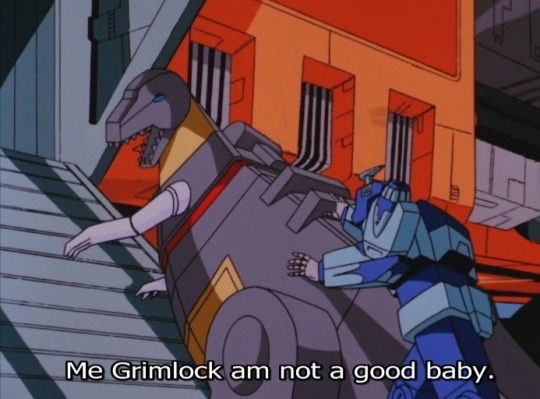
I beg to differ.
You are the goodest baby of all.
28 notes
·
View notes
Text

Says the cybertronian who threatened to punch Grimlock in the face not even ten minutes ago when he wouldn't leave him alone.


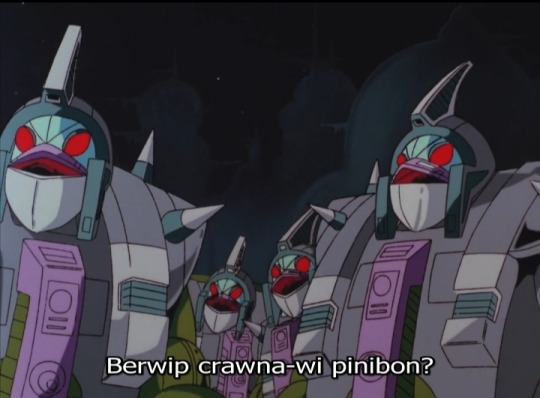
BERWIP CRAWNA-WI PINIBON!!!!
15 notes
·
View notes
Text

"I was just jking about what I said to Ultra Magnus. You're the real leader now lol."
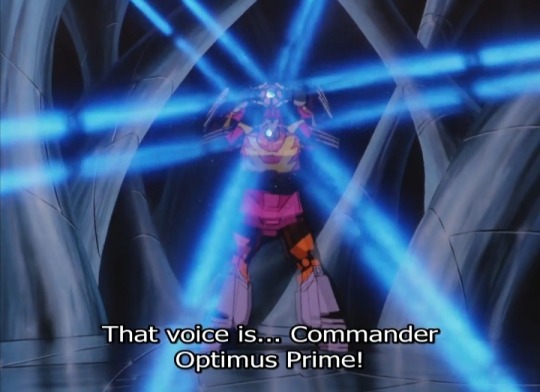
Okay 🥺
8 notes
·
View notes
Text


And then he didn't.
6 notes
·
View notes
Text
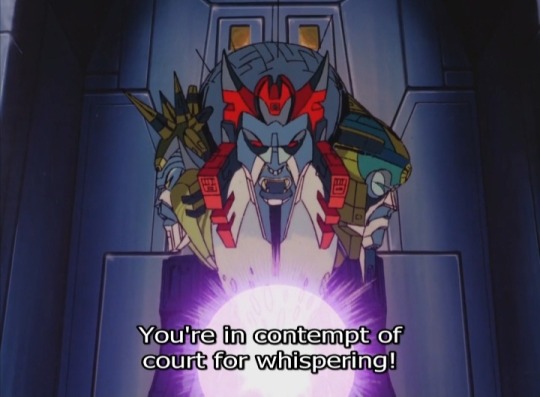
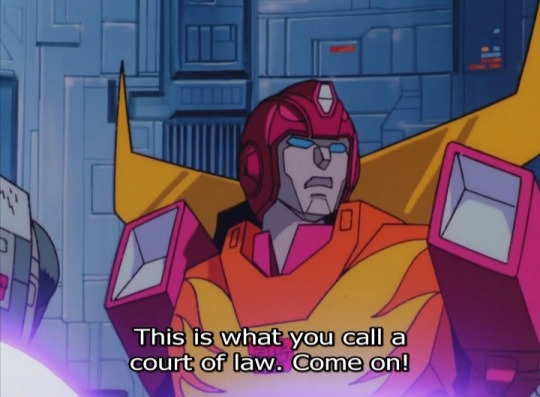
No, "I have nothing but contempt for this court"? ☹
4 notes
·
View notes
Text
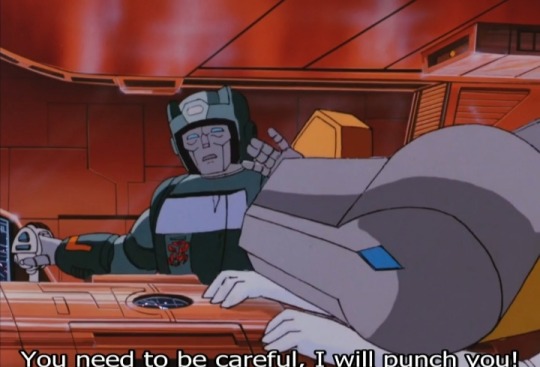
Hey Kup, what the fuck??
That's a baby
2 notes
·
View notes
Text

Oh god
Here we go
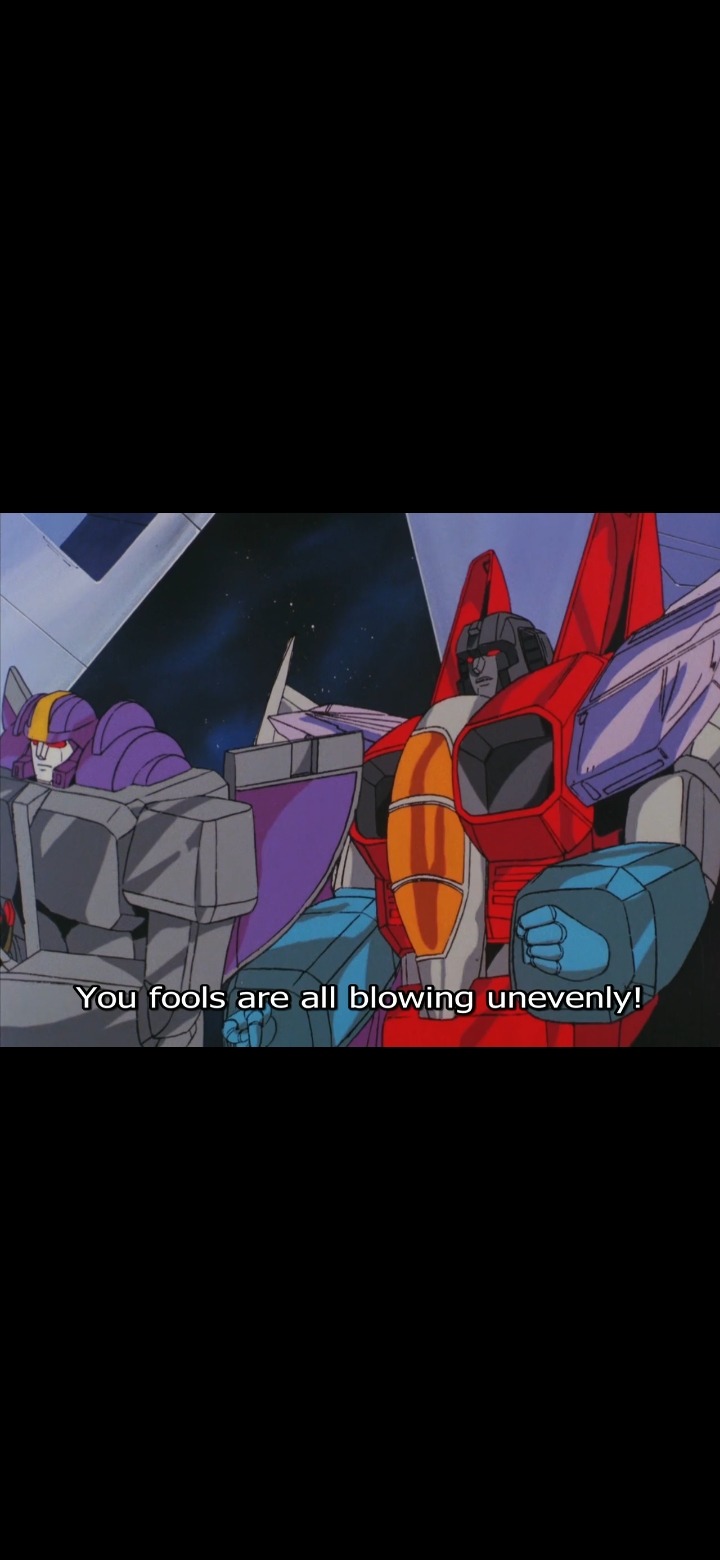
"You DARE play unevenly at MY coronation? Absolutely disgusting."
2 notes
·
View notes
Text
I genuinely love the Japanese dub of the 86 movie. I'm so happy that Walruslaw released their translation, even if it is rough. It's nice to see the cultural differences and the extra dialog was a nice touch. The humor was great and so was the voice acting. (But I already knew the last bit since I did watch a raw of this dub before)
I think the best part about the Japanese dub is knowing that G1 was translated for very young Japanese children, and then the film comes along and makes it slightly more messed up then the original English version by having multiple characters scream in pain as they are wounded or dying.
I'll definitely be watching this dub multiple times.
#Loon.txt#Still not over Unicron apparently saying the B word#That was so unexpected and took me out#Anyways goodnight#I might pay for staying up this late at work but it was so worth it.#Transformers (1986)#Transformers (1986) Japanese dub
0 notes